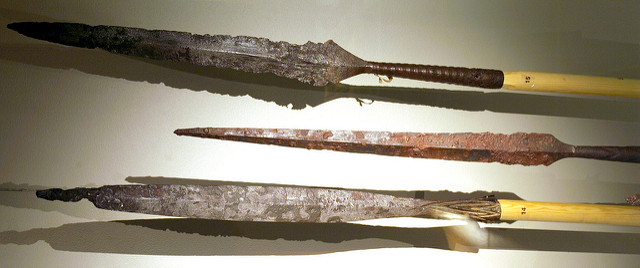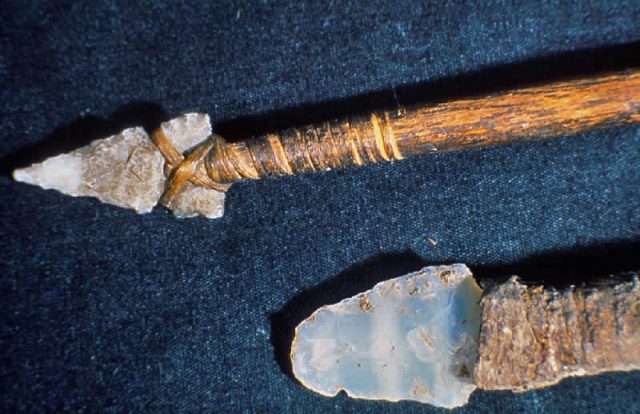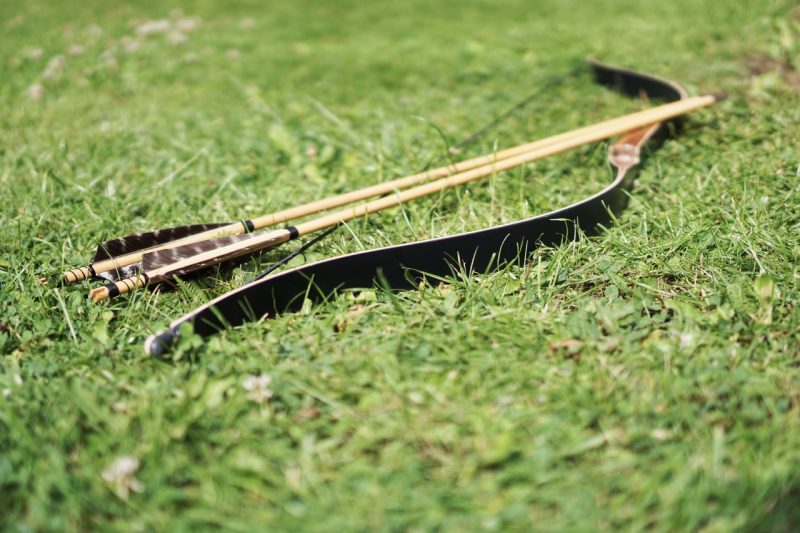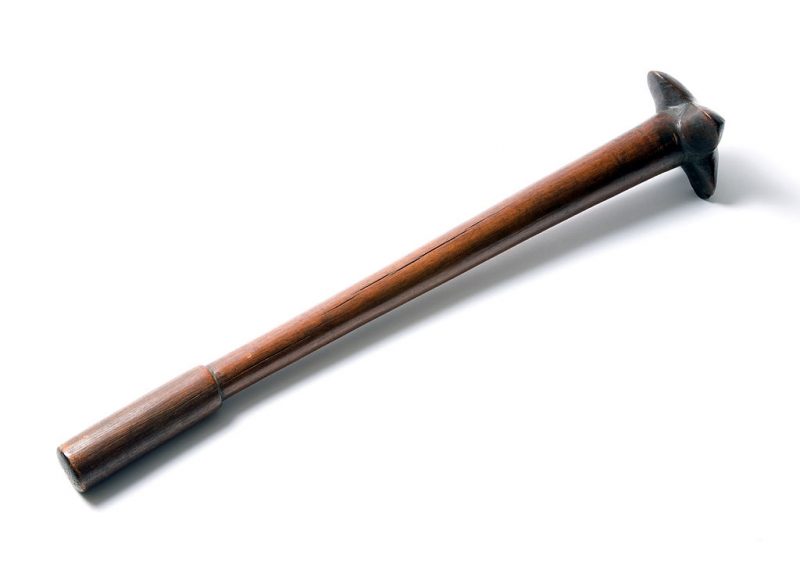How to build self-defense survival weapons
While guns are easily your best option for a self-defense weapon in a disaster or survival scenario in today’s modern era, do you still have the ability to adequately defend yourself without a gun? We will discuss how you can build three effective self-defense weapons by using completely natural materials available in the wilderness.
Spear
The spear is one of the oldest weapons used by man. In fact, other species such as orangutans and chimpanzees have been seen using spear-like weapons by breaking off the limbs of branches and then sharpening the ends with teeth for hunting use.

Spears have evolved over the years when it comes to usage by man. The original spears were simply a stick where the tip was sharpened and then fire-hardened. As years went by, humans took spears a step further by tying sharp rocks to the end of them to increase their durability and lethality. By the time we learned how to forge metals, spears had turned into lances, pikes, and bayonets.
The biggest advantage of a spear is the fact it can be used for both long-range and short-range purposes. It can be cast to strike a target at long ranges or it can be held in the hands to keep an opponent at bay.
Let’s examine three different kinds of spears that you can make for self-defense purposes:
• Simple Spear

The simple spear is nothing more than the first kind of spear that a man invented. Take a pole and remove it of any limbs and branches. Then use a sharp edge to carve the end into a point. Turn the sharpened edge over a flame for a short period of time to harden it and remove the tip of moisture. The simple spear is your best choice for throwing purposes.
• Knife Spear
As long as you have a knife, a pole, and something to tie the two together, you can make a knife spear. Set the hilt of the knife against the end of the pole, after removing the pole of all branches and limbs, and then use vine, rope, or paracord to tie the knife tightly and secure it with a reliable knot.

• Pronged Spear
To make a pronged spear, lash some vine or cord around your branchless pole at least a foot from the end. Then, split the end into three or four prongs and sharpen each one. The cordage will prevent the prong from splitting any further. You’ll then have an excellent defensive spear that doubles as a fishing spear. However, the pronged spear is a poor choice for throwing purposes.
Bow and arrow
Like the spear, the bow and arrow has been around for thousands of years and used in some form or another by nearly all civilizations as both a warfare and hunting tool. Before firearms were invented, there was no better long-range small arm than the bow and arrow.

In a survival or disaster situation, you absolutely can utilize a bow and arrow for hunting, but you can also use it for self-defense by stopping an opponent before they reach you. If you become skilled with a well-made bow and arrow, you’ll be able to fire up to 12 arrows per minute with a range of up to 300 yards.
• Making the Bow and Arrow
- Start by finding a branch a minimum of 4 feet and a maximum of 5 feet long for the bow. The diameter should be around 1 inch. The branches you collect for your arrows should be no more than 1 foot long and half an inch in diameter.
- Remove all limbs and leaves from your branches, and trim the bark on the opposite side of the natural curve.
- Cut two notches on the inside of your main branch 1 inch down from each end, and roughly halfway into the branch.
- Find rope, cordage, or vine to use for your string; the shorter it is, the harder it will be to pull back but the more power it will have.
- Fit the rope or vine into the notches and secure them with a loop; test out the bow by making sure the bow bends properly when the string is pulled. The actual bow is now complete.
- Trim the bark on all of your arrow branches, except for the bark 2 inches from the end where the features will be.
- Make feathers out of actual bird features, paper, plastic, or card stock, and cut right angles into each of them to make a triangle; use glue or tree sap to attach them to the end of the arrow with 3 feathers per arrow.
- Cut a notch into the middle of the end of the arrow to set the string in, and you’re set!
Club
The club may be one of the simplest, if not the most simple, of all weapons used by man. It’s simply a stick with a weighted edge that delivers a heavy blow and gives the user plenty of reach. It’s a perfectly viable self-defense weapon in this regard, and like the spear and bow and arrow, can be made out of completely natural materials.

There are two separate kinds of clubs that we will learn how to make:
Simple club
To make a simple club, all you need to do is find a branch where one end is slightly thicker and wider than the other end and with enough length to give you reach in a self-defense situation. Grasp your hand around the thinner end, and your simple club is complete.
Weighted club
- A stronger and more lethal choice than the simple club is the weighted club.
- Find a rock to use as the club and some rope, paracord, or vine to secure it to the branch.
- Find a branch that is strong enough to hold the weight of the rock but thin enough for you to grasp.
- Lash the rock onto the end of the stick securely, and you’re set.
If you have any comments, please drop us a message on our Outdoor Revival Facebook page.
If you have a good story to tell or blog, let us know about it on our FB page. We’re also happy for article or review submissions; we’d love to hear from you.
We live in a beautiful world, get out there and enjoy it. Outdoor Revival – Reconnecting us all with the outdoors.





